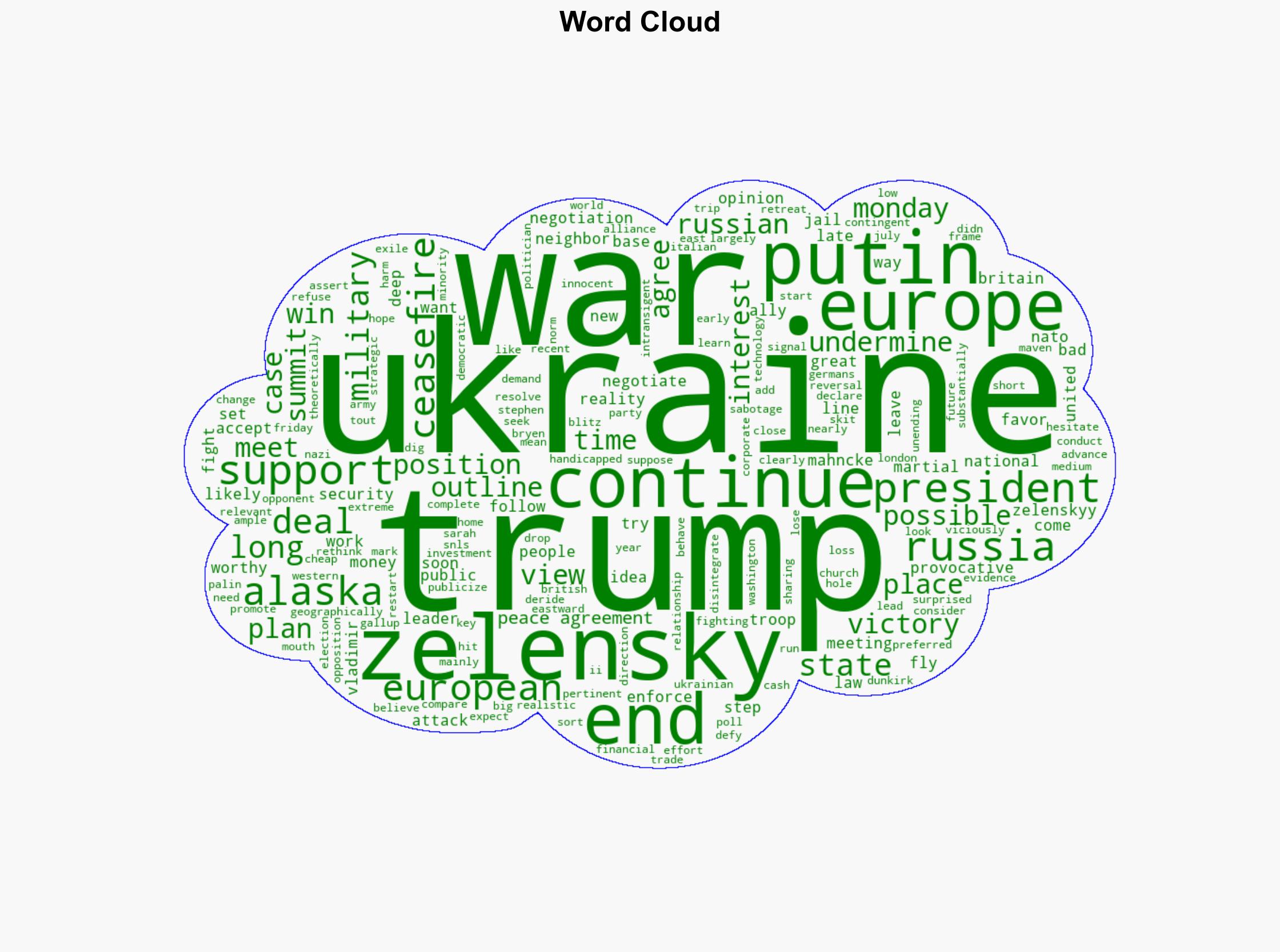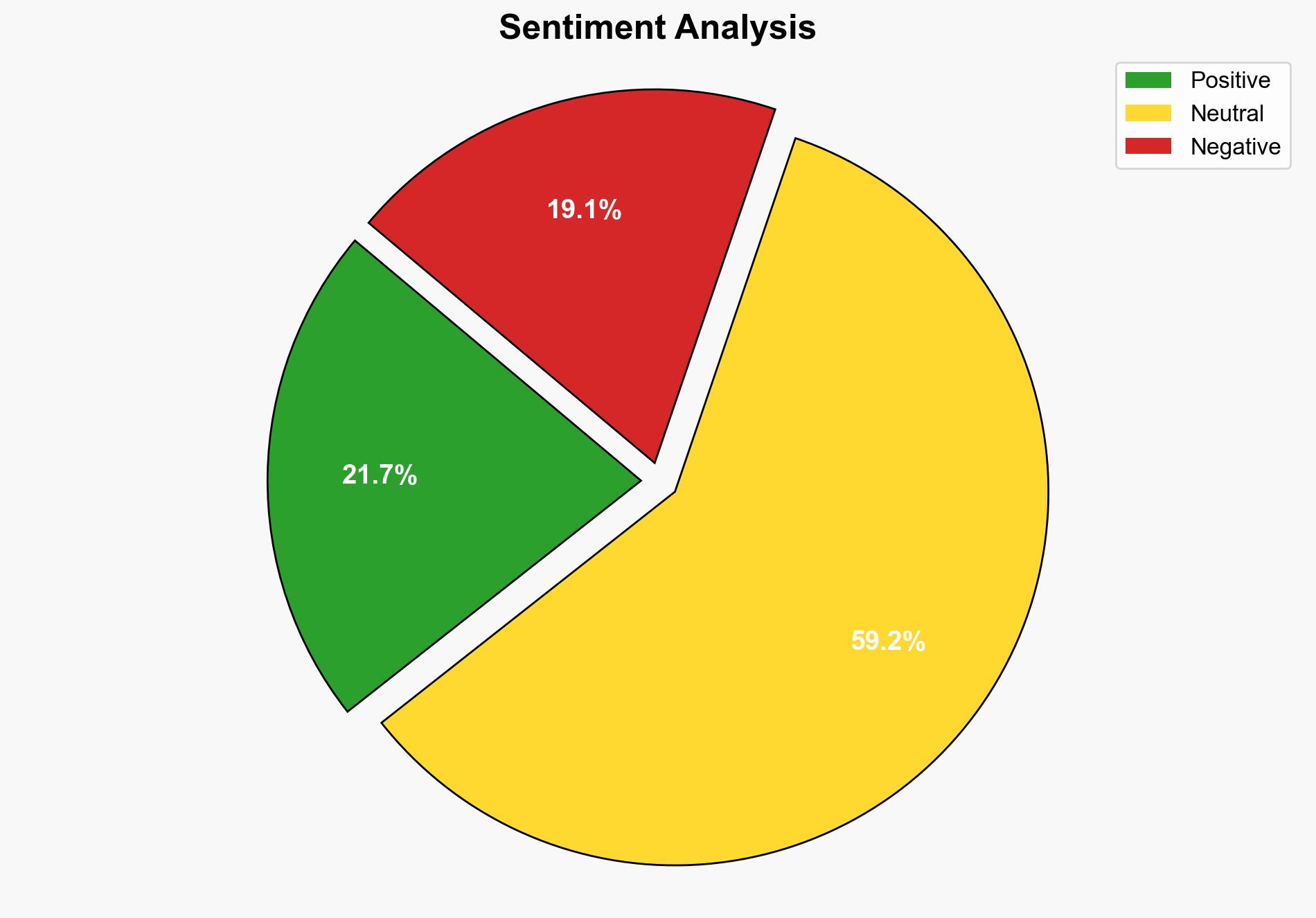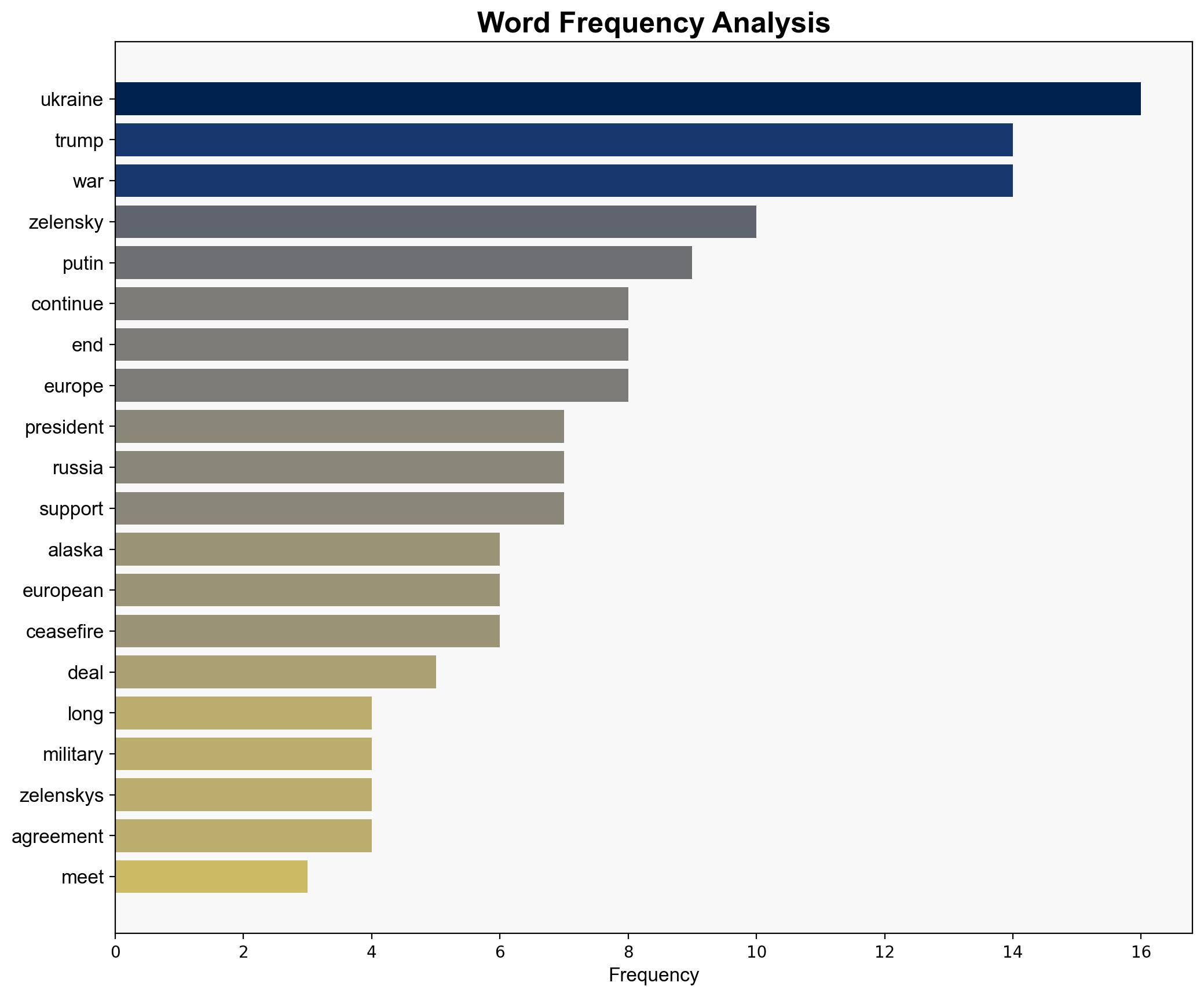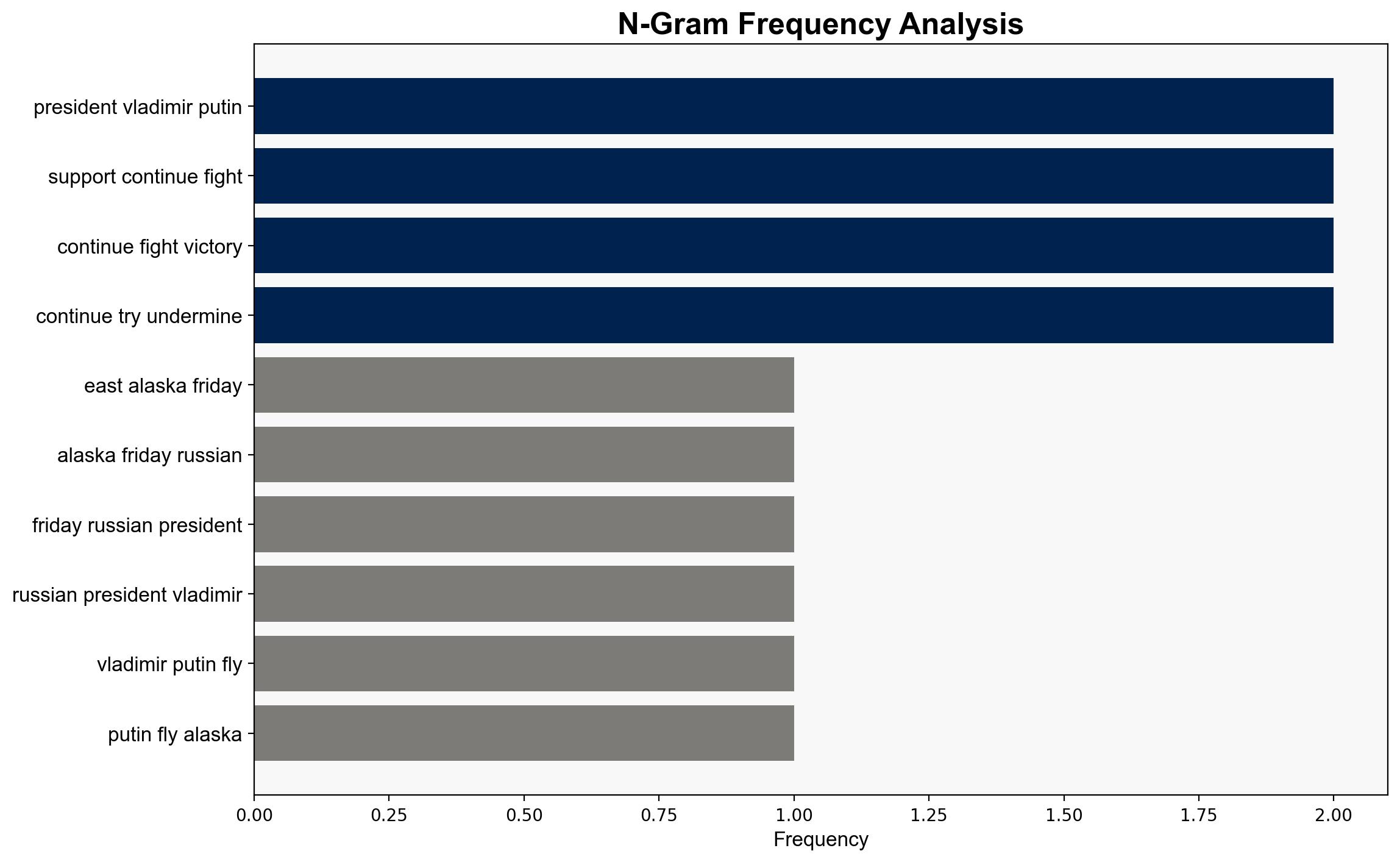East to Alaska – Americanthinker.com
Published on: 2025-08-17
Intelligence Report: East to Alaska – Americanthinker.com
1. BLUF (Bottom Line Up Front)
The intelligence suggests a potential diplomatic initiative involving a meeting between Vladimir Putin and Donald Trump in Alaska, aimed at resolving the Ukraine conflict. The most supported hypothesis is that this meeting is part of a broader strategy to negotiate an end to the war, potentially sidelining current Ukrainian leadership. Confidence in this hypothesis is moderate due to the lack of corroborating evidence and potential biases in the source. Recommended action includes monitoring diplomatic channels for further developments and preparing for shifts in U.S.-Russia-Ukraine relations.
2. Competing Hypotheses
1. **Hypothesis 1:** The meeting between Putin and Trump is a genuine effort to negotiate a peace settlement in Ukraine, with the support of European leaders, potentially leading to a ceasefire or peace agreement.
2. **Hypothesis 2:** The meeting is a strategic maneuver by Trump and Putin to undermine Ukrainian leadership and shift the geopolitical balance, possibly weakening NATO and European unity.
Using ACH 2.0, Hypothesis 1 is better supported due to the narrative of declining support for continued conflict and the portrayal of European leaders as seeking a resolution. However, the source’s potential bias and lack of independent verification weaken overall confidence.
3. Key Assumptions and Red Flags
– **Assumptions:** The intelligence assumes that European leaders are aligned with the proposed peace initiative and that Trump has significant influence over the negotiation process.
– **Red Flags:** The source may exhibit bias, potentially exaggerating Trump’s influence and downplaying Ukrainian agency. The absence of direct statements from involved parties raises questions about the authenticity of the claims.
– **Blind Spots:** Lack of information on the positions of key European countries and NATO’s stance on the proposed meeting.
4. Implications and Strategic Risks
– **Geopolitical Risks:** A shift in U.S.-Russia relations could alter NATO dynamics, potentially weakening the alliance and emboldening Russian actions in Eastern Europe.
– **Economic Risks:** Prolonged conflict or a sudden resolution could impact global energy markets, particularly if sanctions are adjusted.
– **Cyber and Psychological Dimensions:** Increased cyber activity and information warfare could target public opinion and political stability in involved nations.
5. Recommendations and Outlook
- Monitor diplomatic communications for confirmation of the meeting and its agenda.
- Engage with European allies to assess their positions and readiness for potential shifts in U.S. policy.
- Scenario Projections:
- **Best Case:** Successful negotiation leads to a stable peace agreement, reducing regional tensions.
- **Worst Case:** Breakdown in talks exacerbates conflict, leading to increased military engagements and economic sanctions.
- **Most Likely:** Initial talks lead to a temporary ceasefire, with ongoing negotiations and geopolitical maneuvering.
6. Key Individuals and Entities
– Vladimir Putin
– Donald Trump
– Volodymyr Zelenskyy
– European leaders (unspecified)
– NATO Secretary General (unspecified)
7. Thematic Tags
national security threats, geopolitical strategy, diplomatic negotiations, regional focus





